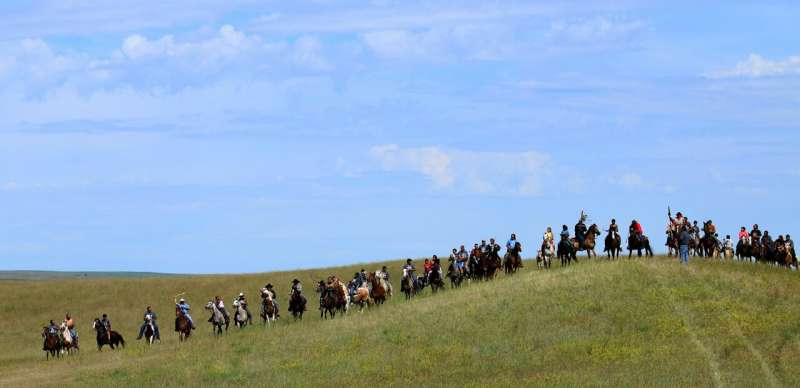
Third-party collection of mail-in ballots has helped rural residents and those with disabilities to vote, yet the practice has become contentious and the target of laws aimed at restricting it.
Critics claim the process is vulnerable to fraud and manipulation.
But new research from the University of Utah’s College of Social & Behavioral Science tells a different story. Ballot collection is more accurately characterized as a pathway for legitimate voter participation, according to a study published last month. Authors Daniel McCool, a professor emeritus in the Department of Political Science, and Weston McCool, a postdoctoral researcher in the Department of Anthropology, debunk misconceptions about ballot collection and document its benefits.
“There is considerable controversy regarding the role of third-party ballot collection in elections,” said Daniel McCool, who has testified as an expert witness in Native American voting rights lawsuits. “Our results indicate that ballot collection is a valued service on Indian reservations, and there is no evidence that it leads to voter fraud.”
The research appears in the July edition of the American Indian Culture and Research Journal.
Focusing on Indian reservations in Montana and other Western states, the father-son team assessed the costs and benefits of ballot collection through a blend of qualitative and quantitative analyses. Native American communities often rely on ballot collection due to various socioeconomic and logistical challenges associated with casting votes.
Sometimes negatively referred to as “ballot harvesting,” ballot collection is the practice of someone other than the voter turning in completed ballots to a post office or ballot box. It has become popular with the rise of mail-in voting, which makes it much easier to vote, but not necessarily for Native Americans who often lack home mail service. Supervised by tribal governments and nonprofits such as Western Native Voice, ballot collectors on reservations deliver tribal members’ ballots to a post office or polling station that can be miles from their homes.
“They collected hundreds of ballots from Native Americans who live in very, very remote places,” McCool said. “The reason why these native voters were taking advantage of the ballot collection service was because it’s very difficult for them to overcome those long distances and the poor transportation.”
Legislatures in Utah and three other Western states have tried to ban the practice in recent years in a move that tribes have denounced as a partisan effort to limit Native Americans’ ability to vote and has led to lawsuits
Many states have adopted restrictions on who can collect another person’s ballot or how many one person can collect. Some forbid ballot collectors from accepting payment, which effectively bans third-party collecting on reservations, according to McCool.
Nineteen states allowed only the voter, a family member or a caregiver to turn in a ballot during the study’s time frame. Of these, four have substantial Native American populations: Arizona, Oklahoma, New Mexico and Nevada.
Utah has since banned ballot collection by third parties under an election reform law unanimously passed in 2020.
By examining trends in vote-by-mail programs, socioeconomic variables, distance to polling stations and mail locations, and U.S. Postal Service delivery efficiency on reservations, the McCools documented how ballot collection improves the voting experience of Native Americans.
Their findings illustrate how ballot collection reduces inequality in the cost of voting for Native Americans. On reservations, where access to polling places and reliable mail services can be limited, ballot collection ensures these community members can exercise their right to vote without undue burden.
The statistical analysis conducted by the McCools found no evidence to support allegations that ballot collection leads to voter fraud, deflating the argument commonly used to restrict ballot collection practices.
“The evidence is actually collected by the conservative think tank, the Heritage Foundation,” McCool said. “We use their data to indicate that there’s no voter fraud associated with ballot collection.
The foundation’s database documents 1,850 cases of proven voter fraud, which resulted in convictions, going back to 1980 for all elections surveyed, from president to dogcatcher.
“Political scientists calculated the frequency of voter fraud based on the Heritage Foundation data,” McCool said. “The frequency is .00006%.”
Another way to frame that figure is to say there were six cases of proven fraud for every 10 million votes cast in the United States.
“The problem is not voter fraud,” McCool said. “The problem is the fraud about voter fraud.”
More information:
Daniel McCool et al, Ballot Collection and Native American Voters: An Assessment of Benefits and Costs, American Indian Culture and Research Journal (2024). DOI: 10.17953/A3.19428
Provided by
University of Utah
Citation:
Exposing myths about ballot collection on Native American reservations (2024, August 17)
retrieved 17 August 2024
from https://phys.org/news/2024-08-exposing-myths-ballot-native-american.html
This document is subject to copyright. Apart from any fair dealing for the purpose of private study or research, no
part may be reproduced without the written permission. The content is provided for information purposes only.
